If you're planning a bathroom renovation, you're faced with an endless choice of styles. How do you envisage using the space - and, just as important, what do you want it to say?
Why not take inspiration from some of the most striking styles of the past? From grand Victorian-inspired schemes to the minimalist bathroom lines of art deco, here are our ideas for a timeless twist on a period look:
Victoriana
Victorian bathrooms were grand affairs by their very nature; only the wealthiest homes had them. Wood panelling, artwork and coverings adorned the walls, while period features were mirrored on large roll-top baths with ornate claw feet, high-cistern toilets and vanity units.
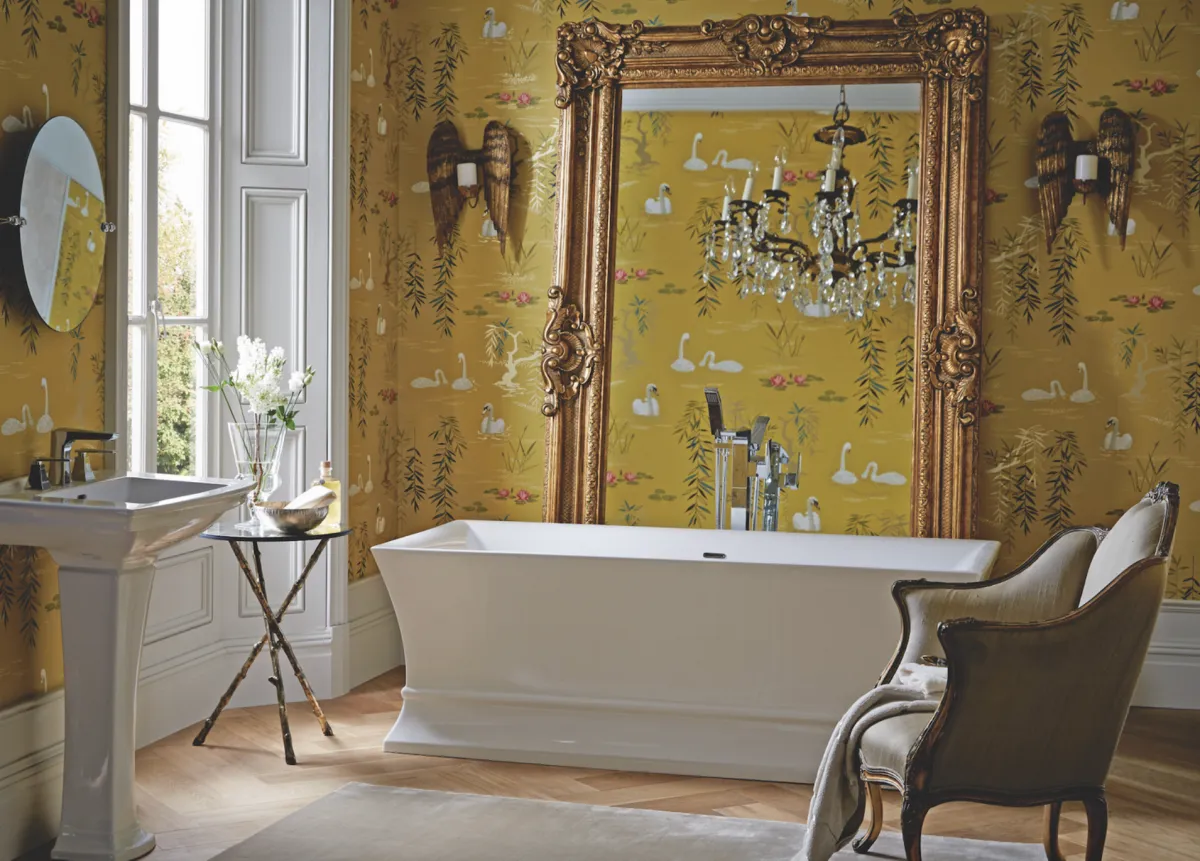
But how can this aesthetic translate to modern everyday life? You don’t necessarily need a vast space with high ceilings, says Rita Rendo Castro, head of marketing and PR at Catchpole & Rye.
‘Many Victorian homes and cottages are small with low ceilings, yet they can still accommodate high- and low-level lavatories, as well as roll-top baths. High-level cisterns can also be wall-hung with the pipe cut to the desired height. Plan your bathroom layout well with professional advice and you’d be surprised how much you can fit into a smaller bathroom without losing that period feel.’
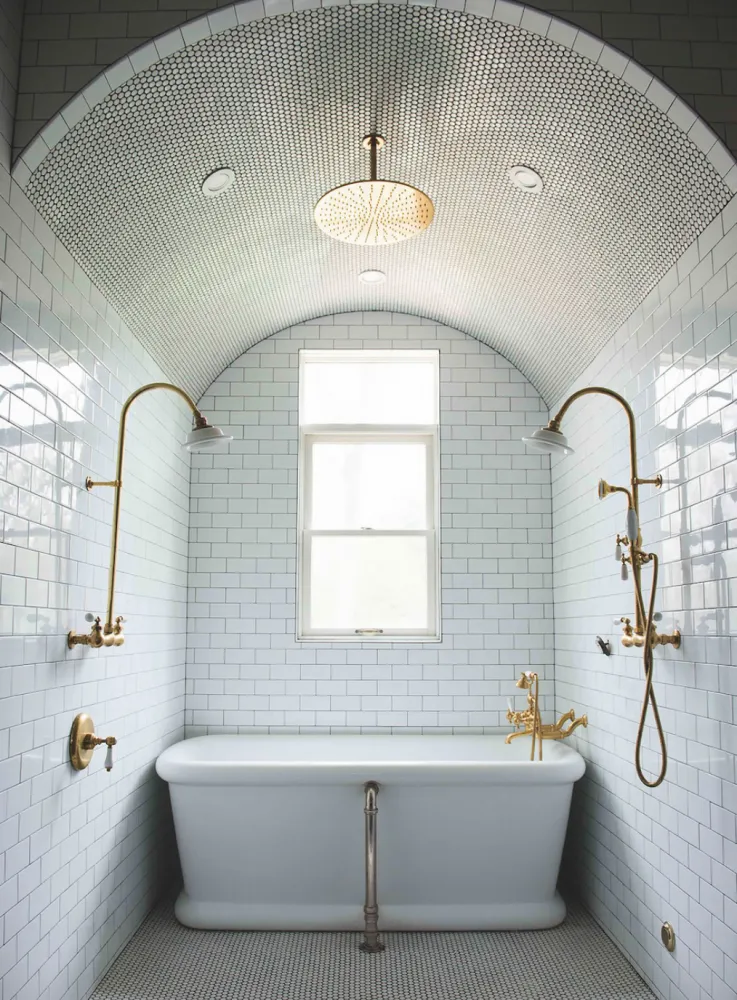
Rita also has advice on how to make Victoriana bathroom design – with its wallpaper and wood-panelling – splash-proof. ‘The secret is to ensure wood is sealed and waterproof, and regular maintenance is kept up. There are also many modern waterproof wallpapers on the market as well as the option of using Perspex screens over a wallpaper of choice.’
Art Deco
The monochrome, geometric angles of the Roaring Twenties created timeless design, and its luxe metals, deco shapes and cut glass all work particularly well in bathrooms as they bring interest to functional furniture.
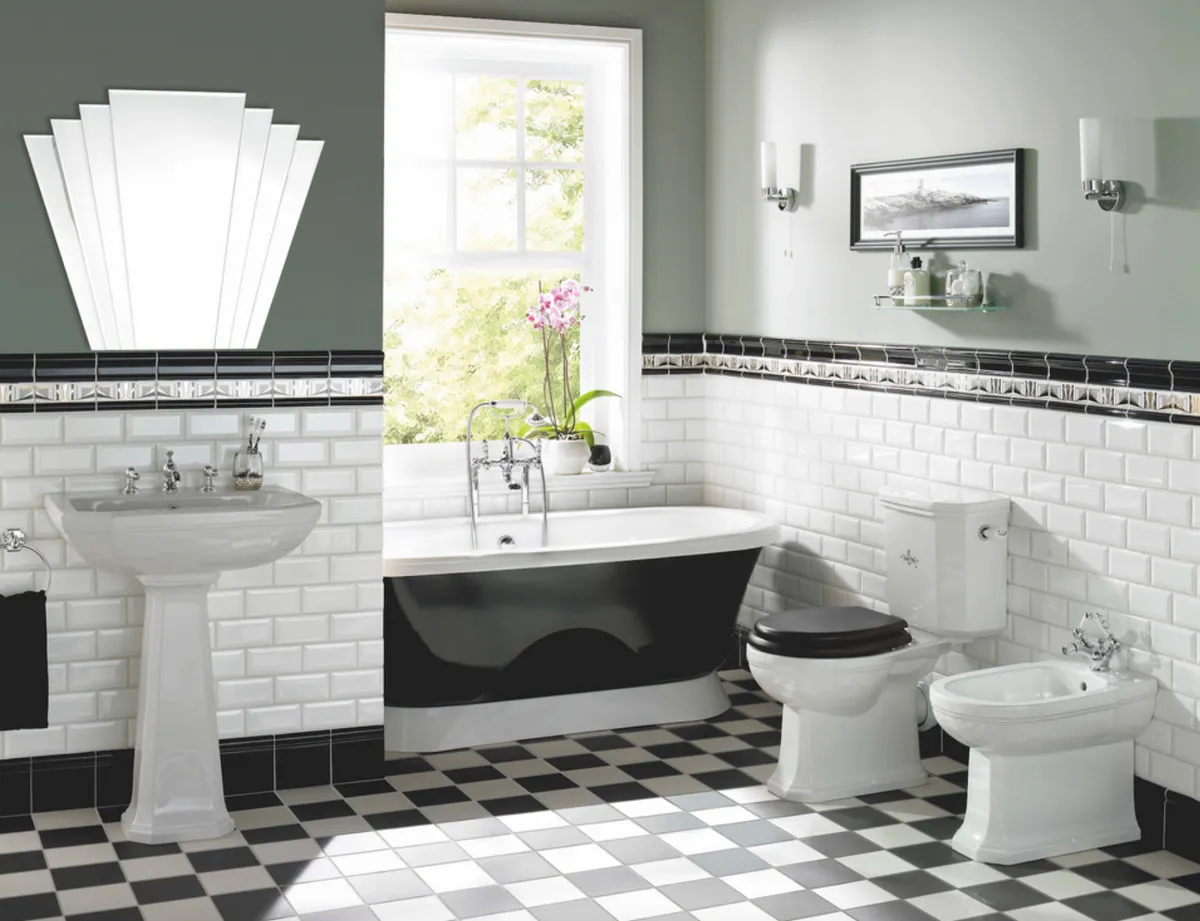
‘Elegant shapes and high-quality materials are not subject to trends, which means they’ll work permanently in good bathroom designs,’ agrees Azin Samin, senior product manager for furniture at Villeroy & Boch. ‘With a mix of geometric shapes, delicate lines and the purposeful use of decorative elements, this design never appears unfashionable or overloaded.
Use materials such as ceramic, marble, solid wood and stainless steel to create timeless character.’ Select the key components of your bathroom – perhaps an angular bath, sleek shower and metal-frame vanity unit – before introducing more shapes in the form of mirrors, tiling and lighting.
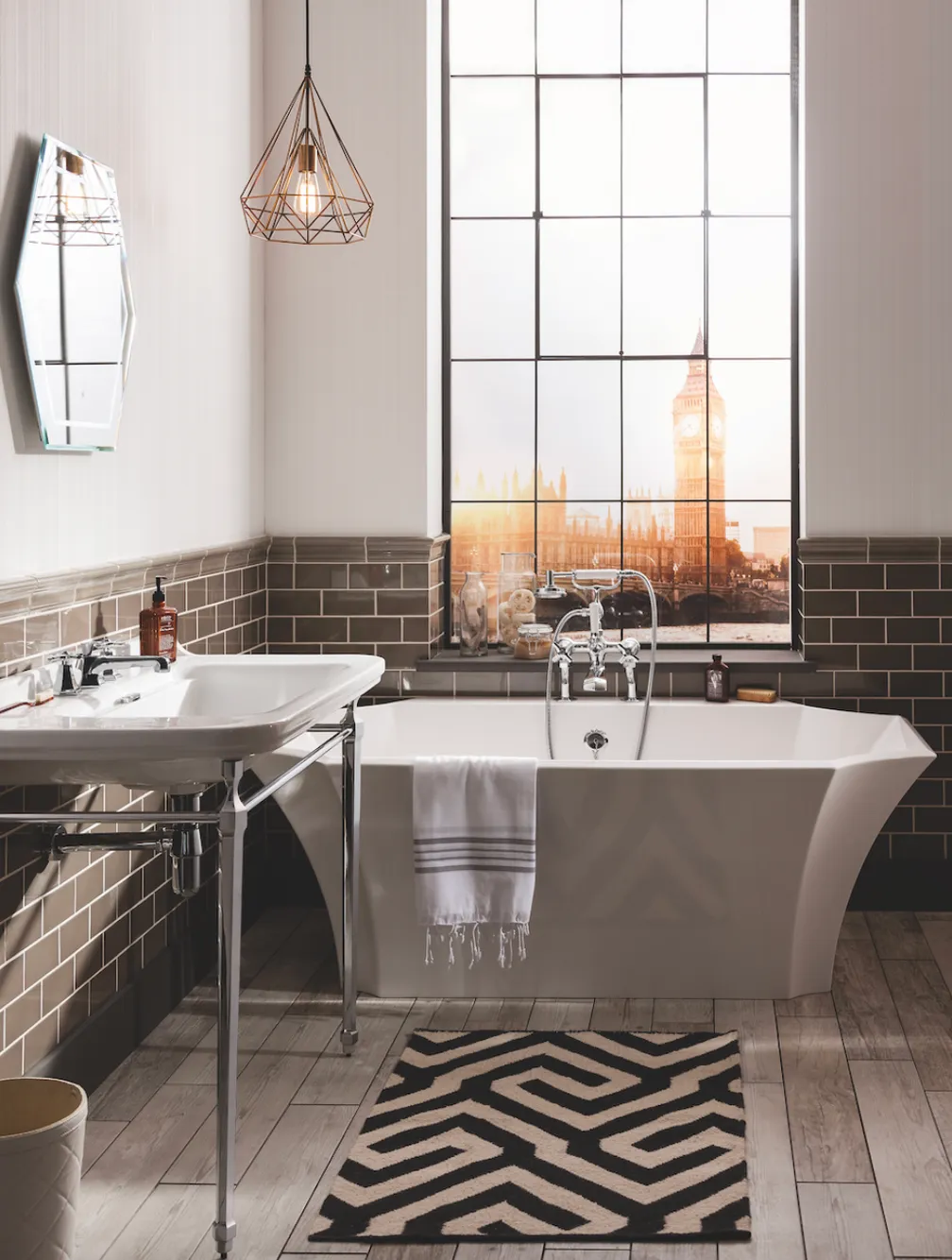
You could keep the look monochrome, or inject a rich colour with symmetry around the washbasin to create a uniform look. Adding warm metals and soft, textured accents will ensure the space doesn’t appear cold.
‘Contrasting shapes work to allow certain elements, such as a washbasin or a bathtub, to be the centre of attention,’ adds Azin. ‘At the same time, the overall concept must be coherent in itself, with subtle details tying each piece of furniture together.’
Seventies Retro
The iconic decor of the ’70s makes just as much of a statement today, though perhaps a little more streamlined, without those furry toilet seat covers and shag pile carpets. Geometrics still play an important role with graphics taking on a retro curve.
Don’t be afraid to play around with different colour tones, either from the same palette or contrasting two or three playful pops of colour.
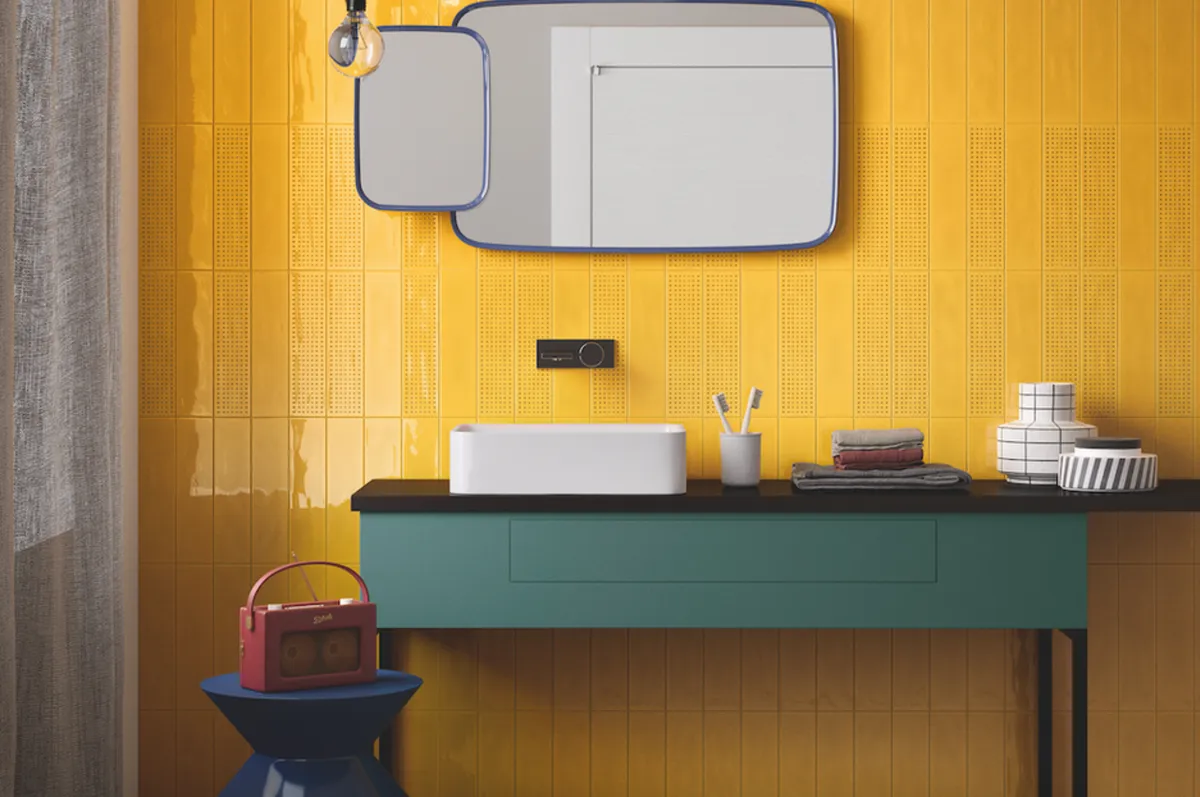
‘It’s a good idea to integrate pattern with tiles, or one of our waterproof wallpapers designed for use in damp environments,’ advises Charlotte Waters, marketing director at West One Bathrooms. ‘
Just be sparing, because large amounts of clashing colours could overwhelm the space.’ Choose key pieces of furniture, deciding whether you're leaning more towards the dark wood of mid-century modern, smooth retro shapes, or cool minimalism.
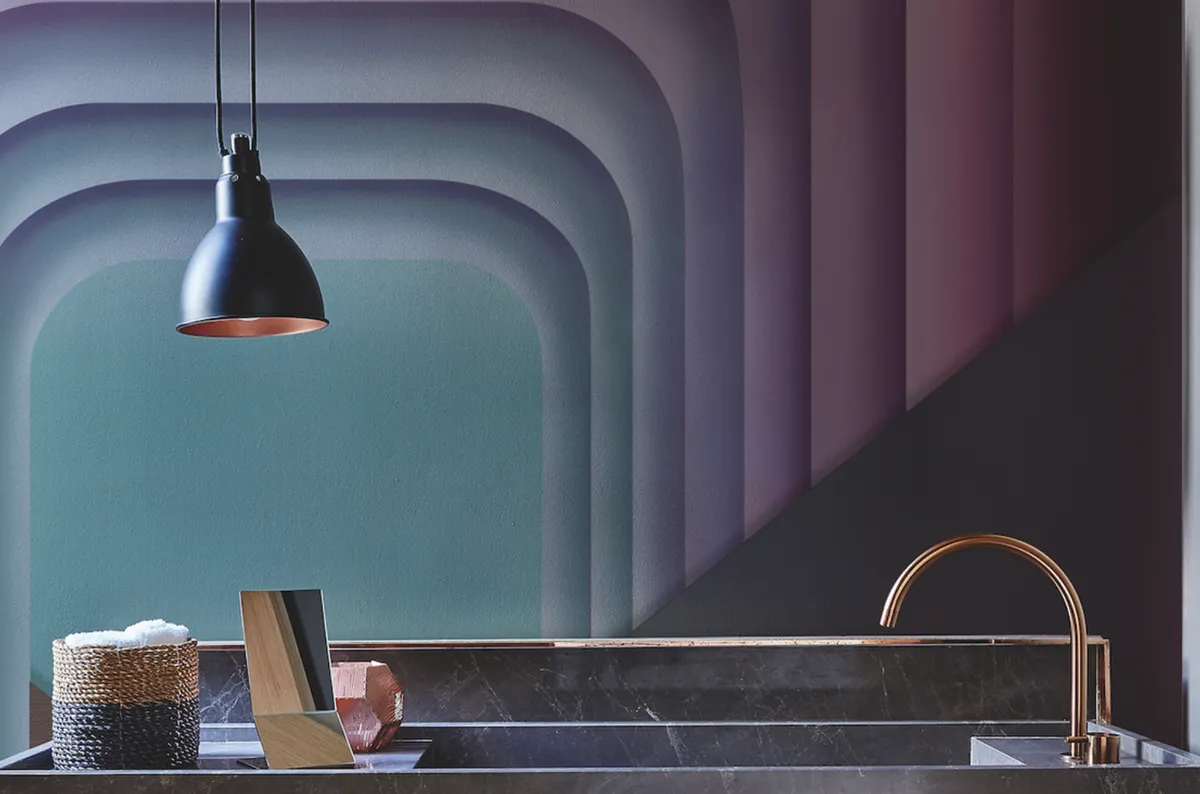
Then layer the look with designer globe light shades and abstract mirror shapes. ‘Brass is the finish of the moment and its warm tone brings a raw, earthy quality,’ adds Charlotte.
‘Whether you want all the brassware fittings in brass or just a few accents, it’ll bring a touch of vintage style. Terrazzo is a classic ’70s material, use it as a basin, countertop or tiling. Or you could channel a more laidback ’70s vibe with natural elements of cork, wooden flooring and hanging planters, either ceramic or woven.’
Words by Victoria Hrastic
